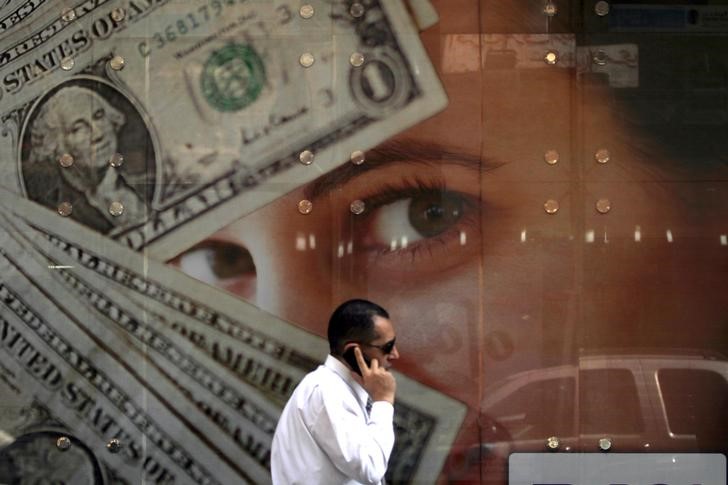By Wayne Cole
SYDNEY, Aug 9 (Reuters) - The Australian and New Zealand dollars nursed losses on Friday after a turbulent week saw them crater at multi-year lows as markets wagered on ever more aggressive policy easing in both countries.
The Aussie dollar AUD=D3 inched up to $0.6805, and away from a decade-low of $0.6678 hit earlier in the week. Resistance now lies at $0.6832, which had been the June low.
Somewhat surprisingly, the currency was actually a shade firmer on the week so far, a resilient performance given the steep losses suffered mid-week as anxious investors priced in further rate cuts at home and abroad.
The kiwi dollar NZD=D3 was still off 0.6% for the week at $0.6490, but it could have been much worse given that at one stage on Wednesday it had been down 2.6% at a three-and-a-half year trough of $0.6378. The next lines of resistance come in at $0.6500 and $0.6557.
Both currencies have been weighed by dovish outlooks from their central banks, with the Reserve Bank of New Zealand (RBNZ) shocking everyone by cutting rates a steep half a point to a record low of 1%, and even flagging the risk of taking rates negative.
The Reserve Bank of Australia (RBA) on Friday warned that near-term risks to the economy were tilted to the downside and cut its forecasts for growth and inflation. it predicted inflation would not get to the floor of its 2-3% target until mid-2021 and that assumed the bank cut rates twice more to 0.5% as the market was pricing.
Futures 0#YIB: are almost fully priced for the next easing to be in October, with 0.5% reached in February or March.
Testifying to lawmakers, RBA Governor Philip Lowe said they still did not expect to have to adopt quantitative easing, but conceded that if all the major central banks went to zero or below they would have to consider radical action.
The best the ever-optimistic Lowe could say was that the economy might be near a "gentle turning point." think that the weakening in the global environment and a deterioration in the domestic labour market figures will push the RBA to cut interest rates in September, earlier than expected, and another cut in November," said Diana Mousina, an economist at AMP Capital.
"More stimulus - monetary or fiscal or both - will be necessary eventually."
The bond market is already wagering that rates will fall to 0.5% at least and stay there for years to come. Yields on 10-year debt AU10YT=RR fell under 1% for the first time ever this week, a world away from the 2.75% level held just a year ago.
Three-year bond futures YTTc1 hit record highs at 99.395, implying an yield of 0.605%.
Yields on New Zealand two-year paper NZ2YT=RR were down at 0.80%, having fallen 21 basis points for the week, the largest drop since March 2012.
Ten-year yields NZ10YT=RR were off a huge 28 basis points for the week at 1.11%, a clear sign investors expected the cash rate to stay super-low for a very long time to come. (Editing by Kim Coghill)
Which stock should you buy in your very next trade?
AI computing powers are changing the stock market. Investing.com's ProPicks AI includes 6 winning stock portfolios chosen by our advanced AI. In 2024 alone, ProPicks AI identified 2 stocks that surged over 150%, 4 additional stocks that leaped over 30%, and 3 more that climbed over 25%. Which stock will be the next to soar?
Unlock ProPicks AI

